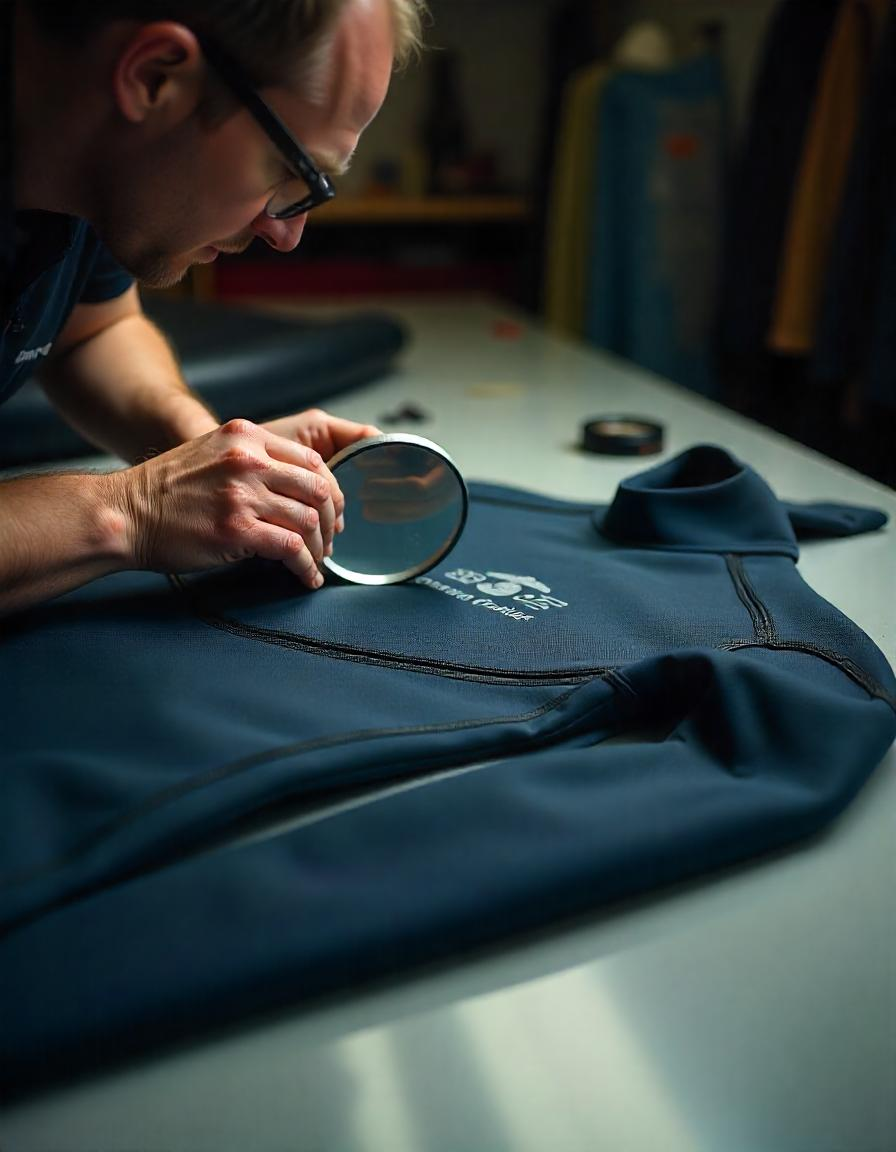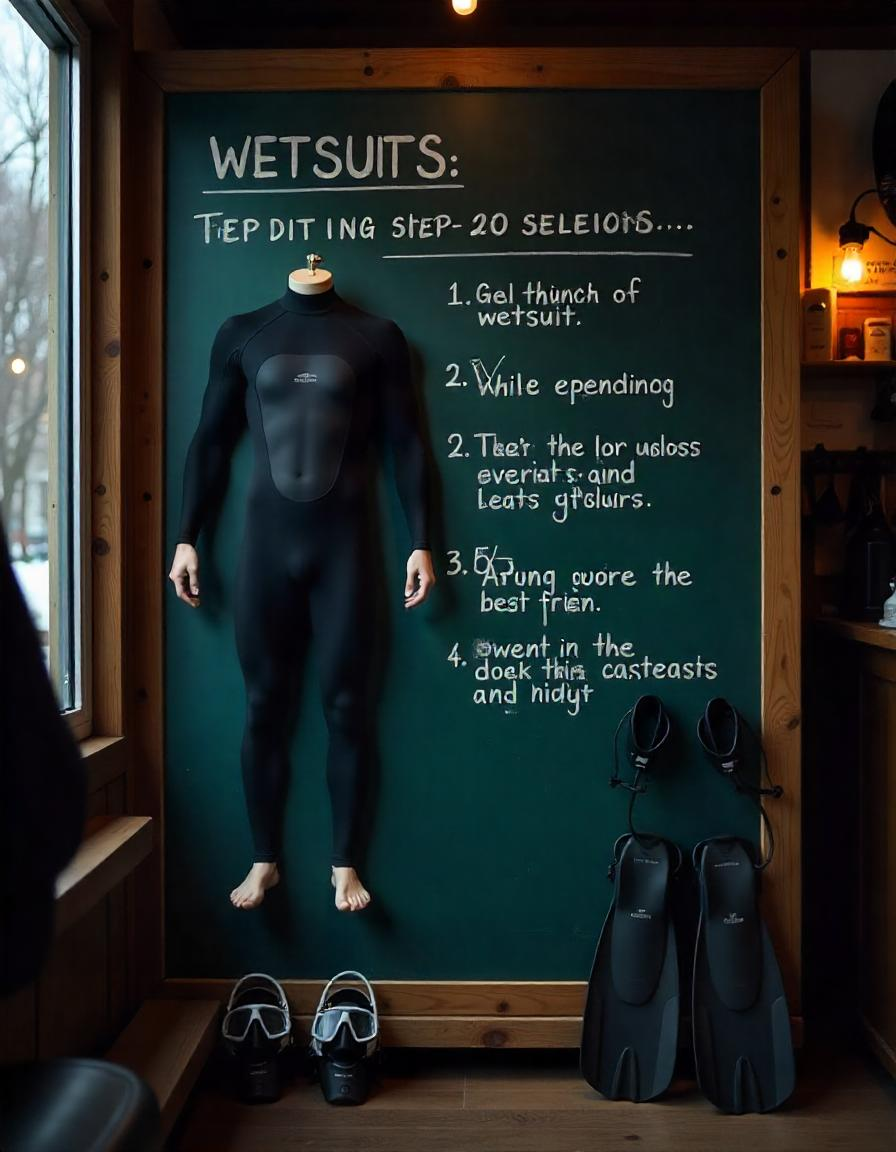A well-maintained wetsuit is essential for enjoying cold water activities like surfing, diving, and wild swimming. Taking proper care of your wetsuit will not only extend its lifespan but also keep it performing at its best. This guide covers everything you need to know about cleaning, storing, and repairing your wetsuit to ensure it stays in top condition for years.
1. How to Clean Your Wetsuit
Proper cleaning is the first step in maintaining your wetsuit. Saltwater, chlorine, and sand can damage the neoprene material over time if not cleaned properly. Here’s how to clean your wetsuit after each use:
-
Rinse with Fresh Water: After every session, rinse your wetsuit thoroughly with fresh, cold water. This removes salt, chlorine, and dirt that can cause wear. Turn your wetsuit inside out to clean the interior and ensure every part is rinsed.
-
Use Wetsuit Cleaner: For a deeper clean, use a specially designed wetsuit shampoo or mild detergent. Fill a bathtub or large basin with lukewarm water and add the cleaner. Let your wetsuit soak for 10-15 minutes, then gently scrub any dirt spots or stains.
-
Avoid Harsh Chemicals: Never use regular laundry detergent, bleach, or fabric softeners, as these can break down the neoprene and affect the suit’s elasticity.
2. Proper Drying Techniques
After cleaning your wetsuit, drying it properly is crucial for preserving its structure and flexibility. Follow these steps for optimal drying:
-
Press Out Excess Water: Gently press the wetsuit to remove excess water. Avoid wringing it out, as this can stretch and damage the material.
-
Hang Dry: Hang your wetsuit inside out on a padded hanger to allow the interior to dry first. This prevents mold or mildew growth. Make sure the hanger is wide enough to support the shoulders and prevent stretching.
-
Avoid Direct Heat: Do not dry your wetsuit in direct sunlight or near heat sources like radiators. High temperatures can damage the neoprene and cause it to lose its shape. Instead, hang it in a shaded, well-ventilated area.
3. How to Store Your Wetsuit
Proper storage is essential for maintaining the longevity of your wetsuit, especially during off-season months. Here’s how to store it correctly:
-
Keep It Clean and Dry: Always make sure your wetsuit is completely dry and free of any salt or dirt before storing it. This helps prevent the growth of mold or mildew during storage.
-
Use a Wide, Padded Hanger: Store your wetsuit on a wide, padded hanger to prevent the shoulders from getting stretched out. Avoid thin hangers or hanging it by the cuffs or ankles, as this can distort the shape.
-
Avoid Folding: Never fold your wetsuit for storage. Folding can cause creases and damage the material. Hang it to maintain its natural shape.
-
Store in a Cool, Dry Place: Keep your wetsuit in a cool, dry area, away from direct sunlight or extreme temperatures. A closet or storage area that’s well-ventilated is ideal.
4. Wetsuit Repairs: Fixing Small Damages
Even with proper care, wetsuits can occasionally suffer damage. Small tears, rips, or punctures can happen, but with the right repair techniques, you can extend the life of your wetsuit. Here’s how to handle minor repairs:
-
Wetsuit Repair Kit: For small holes or tears, use a wetsuit repair kit that contains neoprene glue or adhesive. Follow the instructions on the kit carefully. Typically, you’ll need to clean the damaged area, apply the adhesive, and allow it to cure for several hours.
-
Sealing Seams: If the seams start to come apart, you can re-glue them with wetsuit adhesive. Be sure to apply the adhesive in thin layers, allowing each layer to dry before adding more.
-
Professional Repair Services: If the damage is extensive, such as large tears or broken zippers, it’s best to take your wetsuit to a professional repair service. Many surf shops and specialist wetsuit repair services can fix these issues quickly and effectively.
5. How to Prevent Wetsuit Damage
Preventing damage is always better than repairing it. Here are some tips to help you avoid wear and tear:
-
Avoid Sharp Objects: Be mindful of sharp rocks, coral, or other abrasive surfaces when you’re in the water. These can easily tear or puncture your wetsuit. Always check the area where you’re surfing or swimming for potential hazards.
-
Don’t Overstretch: Avoid overstretching your wetsuit, especially when putting it on or taking it off. Gently pull the suit over your body and avoid pulling it too forcefully, as this can cause the material to stretch out or tear.
-
Take Care When Zipping: Be careful with the zipper on your wetsuit. Always make sure it’s aligned correctly before zipping it up. Never force a stuck zipper; instead, gently wiggle it free to prevent damaging the fabric or teeth.
6. Wetsuit Conditioning
Over time, neoprene can lose its flexibility and softness, especially after frequent use. To keep your wetsuit feeling new, consider using a wetsuit conditioner. These products help maintain the material’s elasticity and prevent it from becoming brittle.
-
How to Apply: After washing your wetsuit, apply the conditioner to the inside of the suit. Gently rub it in, and then hang it to dry. Conditioning your wetsuit regularly will keep it feeling soft and flexible.
7. How Often Should You Replace Your Wetsuit?
Wetsuits are designed to last for several seasons, but they don’t last forever. Here are some signs it may be time to replace your wetsuit:
-
Loss of Insulation: If your wetsuit no longer keeps you warm, even after proper care, it may have lost its insulating properties.
-
Frequent Damage: If your wetsuit has constant holes, tears, or seam issues that can’t be repaired, it’s time to invest in a new one.
-
Stiffness: If the neoprene has become too stiff, even with conditioning, it may no longer provide the flexibility you need for movement.
Conclusion
Proper wetsuit care is essential for ensuring it remains comfortable and functional for your water activities. By cleaning it regularly, storing it correctly, and performing minor repairs when needed, you can extend its lifespan and ensure it performs at its best. Taking these simple steps will keep you warm and protected in the water, allowing you to enjoy your surf, swim, or dive adventures with confidence.





